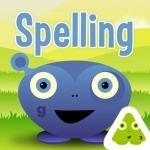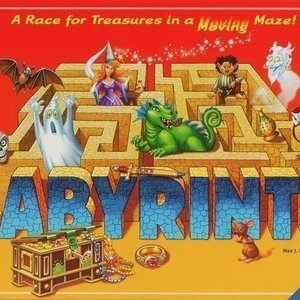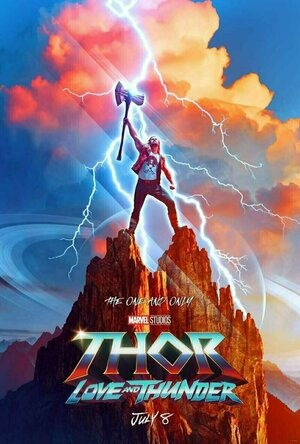Emma @ The Movies (1786 KP) rated Stumptown: The Case of the Girl Who Took Her Shampoo: Volume 1 in Books
May 21, 2020
I found the characters to be mostly non-descript both in the story and visually. On my first read-through I kept having to pop back a few pages and rereading when I lost track of who was who in a scene. It sadly didn't get much clearer on my second read-through.
Our main character is Dex Parios, a PI with a gambling problem. From the very beginning she isn't painted as a very likeable person, it's more than just some of the personality traits, she's been created as a gungho, mildly sex-driven, incompetent woman. At one point I put the book down because she was getting beaten up again with seemingly no real point. There's an almost leering quality to her (as well as other characters) in the illustrations and the inference from the text, as the only character that we really get to know this doesn't make compelling reading.
The storyline runs around the disappearance of a girl, her grandmother who runs the casino Dex is in debt to asks her to investigate and bring her back. That was perfectly introduced, though it took up a lot of pages, but other parts of the story don't click. As I said, I've read the book twice and still can't remember the reason for the second major part of the story... it feels very cloak and dagger which is perhaps why it wasn't very engaging.
Illustrations in comics/graphic novels are either hit or miss for me. The lettering here is pretty standard and managed to be clear and well laid out which was a great boost as sometimes it can get very chunky making it difficult to read. With the illustrations themselves you've got a nice colour palette that changes with the scenes and definitely helps move things along. Beyond that though I'm ultimately not a fan of the finished style, there's not enough differentiation between the characters and, as I mentioned above, it made for a difficult first read.
As an overall story there's something in it but it's a real challenge to like the characters, there wasn't anyone who I was looking forward to seeing again. Dex is given what feels like token bisexuality, it's not expressly pointed out but it's hinted at in a variety of ways. Her sexuality in general is quite heavy handed and I wouldn't be surprised if later down the line we find out she's slept with most of the recurring characters.
After I finished my first reading of Stumptown I messaged a friend... "It was bad and now I'm not sure I want to watch the series they made of it"... I pondered on that for a while because I was tired and maybe I was grumpy while reading it, the second reading came the next day, but even being more alert and less distracted by unfamiliar content I didn't get anything better out of this volume.
Originally posted on: https://emmaatthemovies.blogspot.com/2020/05/based-on-stumptown.html
Purple Phoenix Games (2266 KP) rated Labyrinth in Tabletop Games
Sep 29, 2020
Labyrinth is a game of tile placement and route building with a modular board in which you are trying to navigate the maze to collect various treasures. To setup the game, shuffle the maze tiles and place them randomly on the empty spaces of the board. There will be 1 tile left over. Shuffle the treasure cards and split them evenly between all players. Players may only look at the top card of their stack at a time. On your turn, you are trying to get your pawn to the tile showing the treasure from your card. You do this by shifting the board and creating new pathways through the maze. Take the extra tile, and add it to a row or column, effectively shifting the entire line in one direction. Once you have shifted the maze, move your pawn as far as possible along the open pathway. If you reach your treasure tile, flip over your card. You now look at the next card in your stack, and on your next turn will begin moving towards that tile. If you don’t reach your treasure tile, that is fine. Just try to set yourself up to reach it on your next turn! The game ends once a player has flipped over all of their treasure cards and returned their pawn to its starting position.
I loved Labyrinth as a kid, and I still love it as an adult. The gameplay is pretty engaging, and now that I’m older, I can appreciate the strategy required of the game way more. One of the most fun parts of the game is the act of shifting the tiles. It’s just fun to watch the rows shift, creating new pathways and trapping opponents in dead-end routes. Not just that, but the amount of strategy you need for success is crazy! You have to be thinking several turns in advance, trying to figure out how to shift the randomly set-up maze to your maximum benefit, while also trying to anticipate how your opponents might shift the maze as well. There really is no down-time in Labyrinth, and that keeps it exciting for such a simple game.
The one thing I do not necessarily like about Labyrinth is that you are only allowed to look at your top treasure card at a time. Sometimes you spend several turns getting to a treasure tile, just to look at your next card and realize that you passed through that tile several times on your way here. I guess it would probably make the game easier overall if you could see all of your cards at once and decide your path from there. Not that I necessarily want an easier game, it can just get frustrating sometimes when you have to be traveling back and forth across the board for every single card.
Labyrinth is definitely a game that I will keep in my collection forever. It was a childhood favorite of mine, and I still love to bring it out with my siblings for some good nostalgia coupled with brain-burning strategy. I can’t wait to have children of my own so that I can play this game with them as well. Just because it’s an old game, doesn’t mean that it’s a bad game! Give it a try if you haven’t, because I think you’ll love it. Purple Phoenix Games gives Labyrinth a twisting 8 / 12.

Nom Nom Paleo
Food & Drink and Lifestyle
App
***IMPORTANT: Please contact us with any feedback or issues at feedback@nomnompaleo.com. We'd love...

Swift Playgrounds
Education and Entertainment
App
Swift Playgrounds is a revolutionary app for iPad that makes it fun to learn and experiment with...

First Phrases HD
Education and Games
App
From SmartAppsforKids.com: "In my opinion, the full version is a must-have for parents of children...

Montessori Preschool
Education and Games
App
Looking for an engaging digital preschool app based on a proven teaching method? Montessori...

Motion Math: Fractions!
Education and Games
App
Play the award-winning learning game that puts the action in fraction! * Excellence in Design Award...

Squeebles Spelling Test
Education and Games
App
Perfect for 5 to 11 year olds, Squeebles Spelling Test allows you to set up completely personalised...

Mathemagics - Mental Math Tricks
Education and Games
App
Amaze and delight others as you multiply, divide, and square at lightning fast speed. Learn and...
BankofMarquis (1832 KP) rated Thor: Love and Thunder (2022) in Movies
Jul 8, 2022
Starring Chris Hemsworth, of course, as the titular THOR, Love and Thunder shows our demi-god hero at a crossroads in his life and career. Into this world walks his ex-girlfriend, Jane Foster (Natalie Portman) and chaos ensues as both are chasing the god-killer, Gorr (Christian Bale).
This sort of premise set-up (and the fact that Hemsworth is playing THOR for the 8th time), could have fallen victim to banality and dullness, but under the watchful eye of Waititi (Writer/Director of the severely under-rated JOJO RABBIT), this THOR soars with the best of them and develops the overall arc and (eventual) pay-off of both Thor’s and Jane’s arcs precisely and (upon retrospection) in the only satisfying way that they could have ended. So, kudos needs to be given to Waititi for walking this tightrope and sticking the landing.
Hemsworth, of course, is charming and buff as Thor and balances the action, romantic drama and comedic portions of this story well. Waititi brings more than just comic relief (though he has plenty of that as well) as the voice of Thor’s buddy KORG, while Christian Bale is more than just one-dimensional (how can this actor be anything but interesting) as the main villain of this piece..
What surprised me the most in this film is the portrayal of Jane Foster by Portman and how her character becomes the “female Thor” (that’s not a spoiler, it’s in the trailers) and does NOT become just “Thor’s girlfriend”. Portman has made no secret of her distaste of how her character became the femme fatale in THOR: THE DARK WORLD and refused to return to this character previously. Obviously, Waititi has been able to come up with a storyline - and an arc - that would interest an actress like Portman to return and Natalie nails it. She looked bright-eyed and energized by this part and by where her character goes in this film.
And then there is Tessa Thompson’s Valkyrie. This character is a strong part of Thor’s story - and the story of the survivors of Asgaard (their destroyed homeworld). Thompson owns this part and is engaging and interesting to watch on-screen. Out of necessity, her character and story play a supporting role to the main Thor/Jane story, so her character didn’t get quite enough to do for my tastes. But it did whet my appetite for a stand-alone Valkyrie film (make that happen Marvel).
There are cameos and extended-cameos galore in this film - as well as TWO end credits scenes - so to mention them would be to spoil them, except to say that the GUARDIANS OF THE GALAXY play a pivotal role, but for those who came to see a GUARDIANS film, you’ll have to wait for GUARDIANS 3 to come out next year - this is a THOR film.
A very satisfying entry in the Marvel Cinematic Universe and while not a perfect film (it does try too hard, at times, to mine the same, surprise comic gold of THOR: RAGNAROK), THOR: LOVE AND THUNDER delivers a stand-alone Thor story that drives both the characters of Thor and Jane forward in a smart, intelligent way…and when is the last time the words “smart and intelligent” were used with a comic book film)?
Letter Grade: A-
8 stars (out of 10) and can take that to the Bank(ofMarquis)


